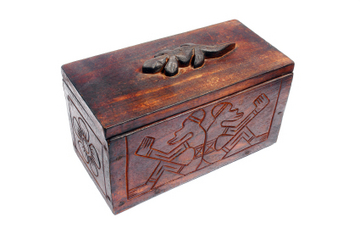|
True antique African art are objects made for actual use rather than for resale purposes.
Antique African art is art that was designed for purposes that are as old as the continent itself. This category of art may be a well-worn bowl used around open fires in a village many years ago, or a mask that marked the passage of a young boy into adulthood. When evaluating art in this category, the criteria may be quite different from traditional methods of art evaluation. A walking stick may be notched so that it doubles as a measure of important life events. African ceremony masks are identifiable by region because of the idealistic character it represents and the materials and colors chosen. The rich and interesting variety of art is found in the intricacies and function of each piece. Unlike art created to be sold, antique African art served a specific purpose for the original owner. For example, the owner of a mask may have been a member of one of the many ethnic groups in the region and his mask may have been used during dancing rituals or festivals, or it may also been used to indicate status within the group. African art must be much more than "old" to be called an antique. Art created by non-African invading groups hundreds of years ago may be old, may be art and may be made in Africa, but if it was not made to be used by an African for a specific purpose, then the classification of antique African art becomes a moot point. Such art pieces are not simple by any stretch of the imagination. They include carefully carved and smoothed African wood sculptures for example, or art work made through lost-wax casting, to name a few methods. Its the abstraction of the piece that gives it value. A sculpture of a woman with child is a visual prayer to the god of fertility. A crocodile carving offers godly protection from the marauding animal. Various object shapes and patterns signify time, ancient practices and even religious values. There is some discussion as to whether African clothing should be included in this category. If you take the original definition that the piece must have utilitarian purpose, then clothing can become art. Intricate weaves and brilliant colors, each with a meaning, become a celebration of an ancient culture. Antique African art is unique and fascinating. Each piece tells a story which brings art to life. It's no wonder that all around the world, collecting original African art has become so popular.
|





